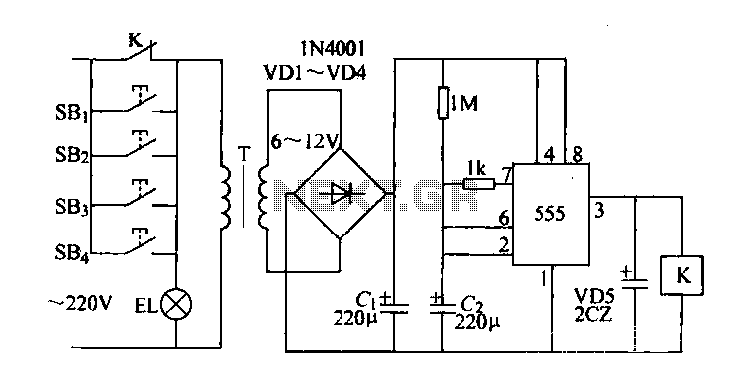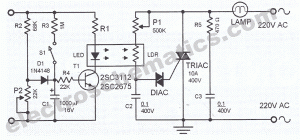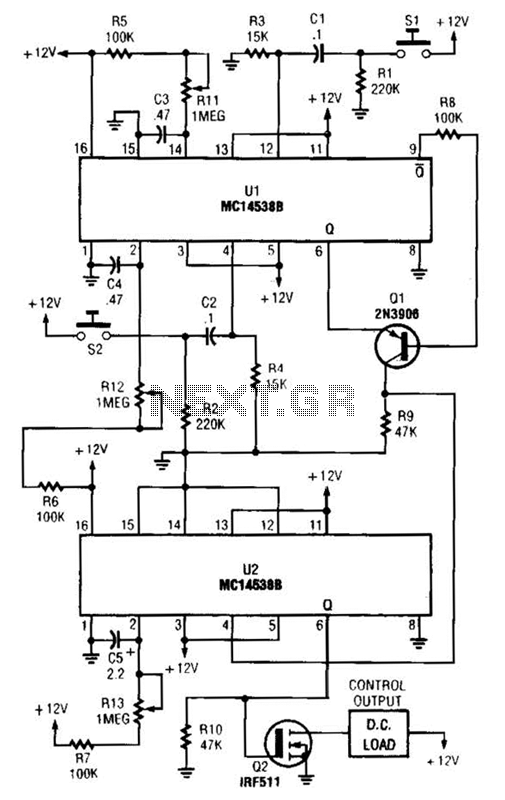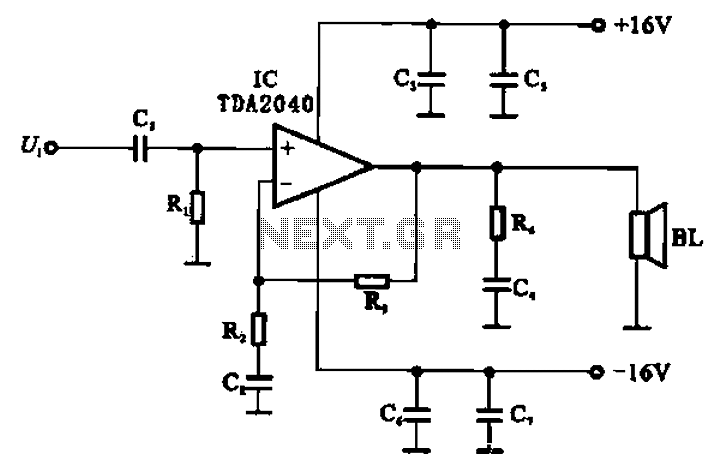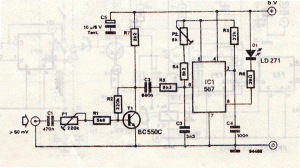
RC coupled self-excited multivibrator circuit
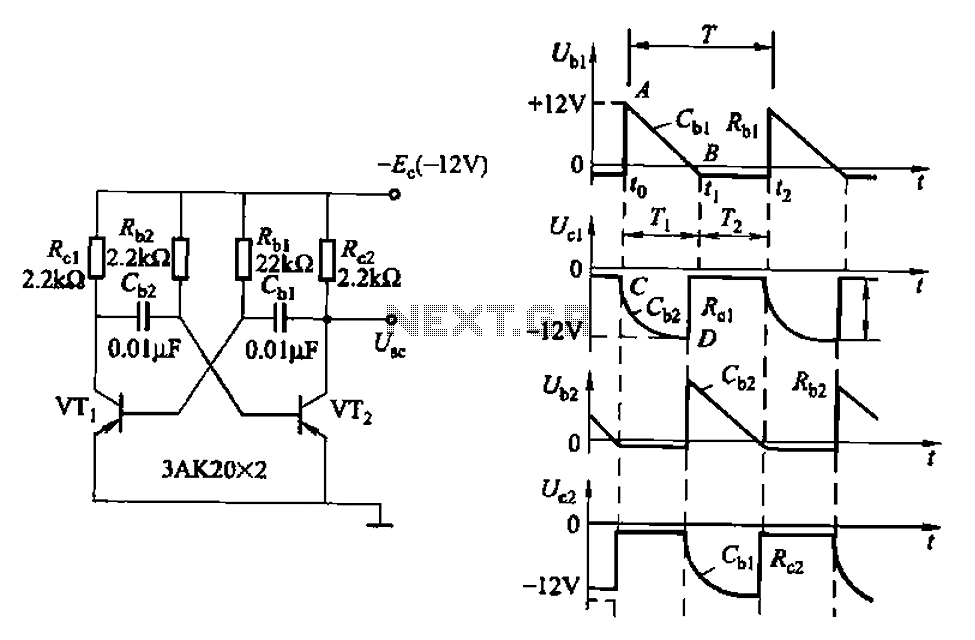
Also known as a no-shot multivibrator, this circuit is often utilized as a pulse (square wave) signal source. The astable flip-flop functions as a strong positive feedback amplifier, with its two branches coupled by an RC timing circuit, resulting in no steady state. This configuration creates an RC coupled self-excited multivibrator circuit.
The astable multivibrator is a fundamental electronic circuit that generates a continuous square wave output without requiring any external triggering. It consists of two active devices, typically bipolar junction transistors (BJTs) or operational amplifiers, configured to provide positive feedback. The circuit is characterized by its two timing resistors and capacitors, which determine the frequency and duty cycle of the output waveform.
In a typical astable multivibrator configuration, the two timing components (R1, R2, and C1) are connected in such a way that they charge and discharge alternately, creating a rapid oscillation. The charging and discharging times are governed by the time constants of the RC network, which can be calculated using the formulas:
- Frequency (f) = 1 / (T1 + T2)
- Where T1 = 0.693 * (R1 + R2) * C1 (time high)
- And T2 = 0.693 * R2 * C1 (time low)
This results in a square wave output that can be used in various applications, such as clock pulses for digital circuits, tone generation, and signal modulation. The duty cycle, which is the ratio of the high time to the total period of the waveform, can be adjusted by varying the resistances and capacitance values.
The astable multivibrator is widely used due to its simplicity, low cost, and versatility. It can be implemented using discrete components or integrated circuits, making it suitable for a range of applications in digital electronics, audio signal generation, and timer circuits. Proper design considerations, such as component tolerances and power supply variations, should be taken into account to ensure reliable operation in practical scenarios.Also known as no-shot multivibrator - often used as a pulse (square wave) signal sources. Astable flip-flop is a strong positive feedback amplifier, its two branches are couple d RC timing circuit, so there is no steady state. RC coupled self-excited multivibrator circuit
The astable multivibrator is a fundamental electronic circuit that generates a continuous square wave output without requiring any external triggering. It consists of two active devices, typically bipolar junction transistors (BJTs) or operational amplifiers, configured to provide positive feedback. The circuit is characterized by its two timing resistors and capacitors, which determine the frequency and duty cycle of the output waveform.
In a typical astable multivibrator configuration, the two timing components (R1, R2, and C1) are connected in such a way that they charge and discharge alternately, creating a rapid oscillation. The charging and discharging times are governed by the time constants of the RC network, which can be calculated using the formulas:
- Frequency (f) = 1 / (T1 + T2)
- Where T1 = 0.693 * (R1 + R2) * C1 (time high)
- And T2 = 0.693 * R2 * C1 (time low)
This results in a square wave output that can be used in various applications, such as clock pulses for digital circuits, tone generation, and signal modulation. The duty cycle, which is the ratio of the high time to the total period of the waveform, can be adjusted by varying the resistances and capacitance values.
The astable multivibrator is widely used due to its simplicity, low cost, and versatility. It can be implemented using discrete components or integrated circuits, making it suitable for a range of applications in digital electronics, audio signal generation, and timer circuits. Proper design considerations, such as component tolerances and power supply variations, should be taken into account to ensure reliable operation in practical scenarios.Also known as no-shot multivibrator - often used as a pulse (square wave) signal sources. Astable flip-flop is a strong positive feedback amplifier, its two branches are couple d RC timing circuit, so there is no steady state. RC coupled self-excited multivibrator circuit

